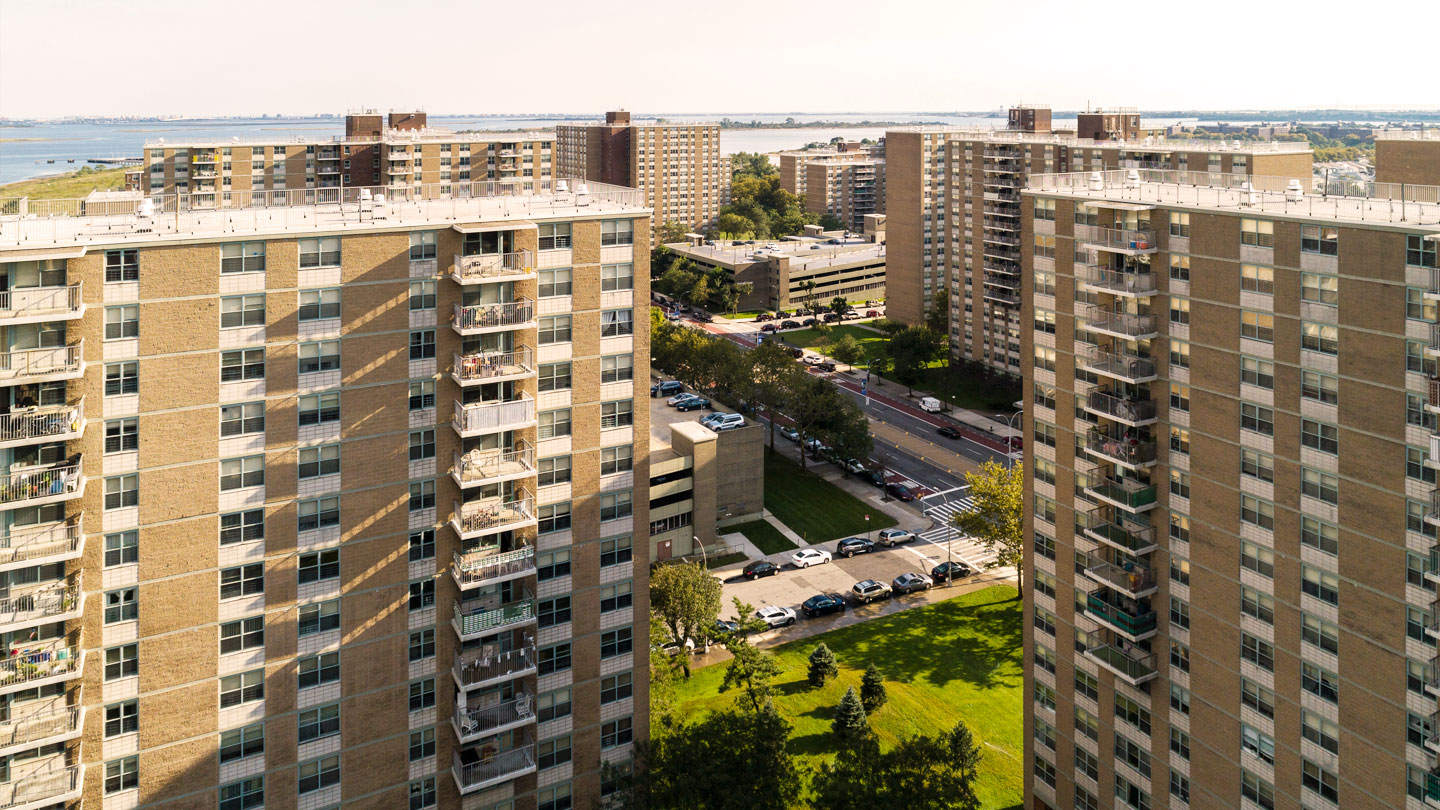From startups to legacy brands, you're making your mark. We're here to help.
-
Innovation Economy
Fueling the success of early-stage startups, venture-backed and high-growth companies.
-
Midsize Businesses
Keep your company growing with custom banking solutions for middle market businesses and specialized industries.
-
Large Corporations
Innovative banking solutions tailored to corporations and specialized industries.
-
Commercial Real Estate
Capitalize on opportunities and prepare for challenges throughout the real estate cycle.
-
Community Impact Banking
When our communities succeed, we all succeed. Local businesses, organizations and community institutions need capital, expertise and connections to thrive.
-
International Banking
Power your business' global growth and operations at every stage.
Key Links
Prepare for future growth with customized loan services, succession planning and capital for business equipment.
-
Asset Based Lending
Enhance your liquidity and gain the flexibility to capitalize on growth opportunities.
-
Equipment Financing
Maximize working capital with flexible equipment and technology financing.
-
Trade & Working Capital
Experience our market-leading supply chain finance solutions that help buyers and suppliers meet their working capital, risk mitigation and cash flow objectives.
-
Syndicated Financing
Leverage customized loan syndication services from a dedicated resource.
-
Commercial Real Estate
Capitalize on opportunities and prepare for challenges throughout the real estate cycle.
-
Employee Stock Ownership Plans
Plan for your business’s future—and your employees’ futures too—with objective advice and financing.
Key Links
Serving the world's largest corporate clients and institutional investors, we support the entire investment cycle with market-leading research, analytics, execution and investor services.
-
Institutional Investors
Putting your long-tenured investment teams on the line to earn the trust of institutional investors.
-
Markets
Direct access to market leading liquidity harnessed through world-class research, tools, data and analytics.
-
Prime Services
Helping hedge funds, asset managers and institutional investors meet the demands of a rapidly evolving market.
-
Global Research
Leveraging cutting-edge technology and innovative tools to bring clients industry-leading analysis and investment advice.
-
Securities Services Solutions
Helping institutional investors, traditional and alternative asset and fund managers, broker dealers and equity issuers meet the demands of changing markets.
Key Links
Providing investment banking solutions, including mergers and acquisitions, capital raising and risk management, for a broad range of corporations, institutions and governments.
-
Center for Carbon Transition
J.P. Morgan’s center of excellence that provides clients the data and firmwide expertise needed to navigate the challenges of transitioning to a low-carbon future.
-
Corporate Finance Advisory
Corporate Finance Advisory (“CFA”) is a global, multi-disciplinary solutions team specializing in structured M&A and capital markets. Learn more.
-
Development Finance Institution
Financing opportunities with anticipated development impact in emerging economies.
-
Sustainable Solutions
Offering ESG-related advisory and coordinating the firm's EMEA coverage of clients in emerging green economy sectors.
-
Mergers and Acquisitions
Bespoke M&A solutions on a global scale.
-
Capital Markets
Holistic coverage across capital markets.
Your partner for commerce, receivables, cross-currency, working capital, blockchain, liquidity and more.
Key Links
A uniquely elevated private banking experience shaped around you.
-
Banking
We have extensive personal and business banking resources that are fine-tuned to your specific needs.
-
Investing
We deliver tailored investing guidance and access to unique investment opportunities from world-class specialists.
-
Lending
We take a strategic approach to lending, working with you to craft the right financing solutions matched to your goals.
-
Planning
No matter where you are in your life, or how complex your needs might be, we’re ready to provide a tailored approach to helping your reach your goals.
Whether you want to invest on your own or work with an advisor to design a personalized investment strategy, we have opportunities for every investor.
-
Invest on your own
Unlimited $0 commission-free online stock, ETF and options trades with access to powerful tools to research, trade and manage your investments.
-
Work with our advisors
When you work with our advisors, you'll get a personalized financial strategy and investment portfolio built around your unique goals-backed by our industry-leading expertise.
-
Expertise for Substantial Wealth
Our Wealth Advisors & Wealth Partners leverage their experience and robust firm resources to deliver highly-personalized, comprehensive solutions across Banking, Lending, Investing, and Wealth Planning.
Explore a variety of insights.
Key Links
Insights by Topic
Explore a variety of insights organized by different topics.
Key Links
Insights by Type
Explore a variety of insights organized by different types of content and media.
Key Links
We aim to be the most respected financial services firm in the world, serving corporations and individuals in more than 100 countries.
Key Links
- Insights
- Real Estate
- Commercial Real Estate
- 5 tips for using Historic Tax Credit to preserve affordable housing

Historic buildings may not be the first place that comes to mind when you think of affordable housing. However, if a structure is at least 50 years old, it may qualify for Historic Tax Credit (HTC) equity to support updates.
The firm’s HTC affordable housing preservation
$1.1B+
HTC equity directed to supporting affordable housing preservation
235
Buildings revitalized with the firm’s HTC equity
11,000+
Affordable housing units preserved with the firm’s HTC equity
SOURCE: Community Development Banking data from 2021 to 2024.
The HTC program is an option for financing affordable housing preservation projects. These projects can involve complex financing structures, multiple approvals and lots of time, so it’s important for developers and housing authorities alike to keep these five tips in mind.
1. Start now.
In many cities, affordable housing is decades old and needs updating. Given the complexity of these projects, time is of the essence. Begin talking to historic preservation consultants and financial sources about your rehabilitation plans as soon as possible.
2. Build for the future.
Affordable housing should be built to last, regardless of ongoing funding. In addition to focusing on critical items like roofs, windows and HVAC systems, you should consider future advancements, such as:
- Larger mail rooms for e-commerce deliveries
- Laundry machines that accept credit cards and mobile payments
- Wi-Fi access, especially in rural communities and areas with limited broadband access
- Updated waste management services and systems, including underground models and mobile scheduling for pickup
3. Work with a bank that thinks outside the box.
Your banking team can do more than outline HTC certification; it can also help you determine the best financing options for your project. For example, if your project includes a daycare center, clinic or other community facility, it may qualify for New Markets Tax Credit equity. Likewise, you may be able to finance your project through Low-Income Housing Tax Credit, agency lending and bridge and permanent lending. Your banking team can connect you with tax advisors, consultants and other experts.
4. Balance HTC requirements with energy efficiency.
It’s possible to improve your energy efficiency while preserving historic elements. HTC financing frequently requires preserving buildings’ facades, windows, interior entryways and lobbies. As a result, you can’t add updates such as energy-efficient windows or exterior cladding that would change a building’s exterior. You can, however, make updates that don’t affect historic elements, such as upgrading interior building systems and installing LED light bulbs and energy-efficient appliances. These improvements may also qualify for energy tax credits.
5. Allow time to make accessibility updates.
Much of the existing public housing stock predates the Americans with Disabilities Act (ADA) of 1990, and properties may need renovations for ADA compliance. These renovations take precedence over HTC requirements. For example, if your project requires accessibility ramps or Braille signage, you must make these updates even if they alter the building’s historic character. Be sure to factor in time and money to make these necessary changes.
Public-private affordable housing efforts
HTC equity is just one example of public-private collaboration in accessible, affordable housing development. Others include:
- Housing assistance programs (HAPs): These programs provide financial aid to low-income families. HAPs can include rental subsidies, vouchers and other forms of support to ensure access to safe and affordable housing.
- Local revitalization initiatives: Many municipalities offer subsidies or tax benefits to developers that support local or regional initiatives to preserve historic properties and cultural landmarks. Research local revitalization initiatives to identify programs applicable to your project.
Watch a historic preservation in action. Check out the firm’s collaboration with the New York City Housing Authority to rehabilitate the Williamsburg Houses in Brooklyn.
JPMorgan Chase Bank, N.A. Member FDIC. Visit jpmorgan.com/commercial-banking/legal-disclaimer for disclosures and disclaimers related to this content.
Related insights

Real Estate
7 ways to make your multifamily building feel like a community
Sep 11, 2025
For multifamily owners and operators, intangibles including creating a welcoming space can significantly reduce renter turnover.

Real Estate
How APIs can supercharge commercial real estate operations
Sep 10, 2025
Application programming interfaces, or APIs, can help streamline your operations and unlock business insights. Find out how to get started.

Real Estate
4 tips for using agency debt amid interest rate uncertainty
Sep 02, 2025
When predicting interest rates’ path is challenging, agency loans offer flexibility. Find out how multifamily investors can use agency loans in the current rate environment.

Real Estate
7 ways to reduce multifamily operational costs
Aug 29, 2025
Owners and operators can help ensure properties run smoothly by making energy-efficient upgrades, optimizing outside relationships, and implementing treasury and payments tools.

Real Estate
The future of modular affordable housing
Aug 28, 2025
Modular construction can shorten project timelines and reduce costs, making it a promising tool to tackle the affordable housing crisis.

Real Estate
Multifamily business succession planning
Aug 27, 2025
As you begin the process, consider the skills your successors will need and how to ensure a smooth transition.

4:59 - Real Estate
Farmers market anchors fast-growing Alabama community
Aug 21, 2025
Find out how Foley, Alabama built a thriving farmers market, creating opportunities for entrepreneurs and expanding access to fresh produce and seafood.

Real Estate
2025 multifamily market update for real estate investors
Aug 21, 2025
Take a closer look at what multifamily investors in cities across the country can expect in the months ahead.
You're now leaving J.P. Morgan
J.P. Morgan’s website and/or mobile terms, privacy and security policies don’t apply to the site or app you're about to visit. Please review its terms, privacy and security policies to see how they apply to you. J.P. Morgan isn’t responsible for (and doesn’t provide) any products, services or content at this third-party site or app, except for products and services that explicitly carry the J.P. Morgan name.